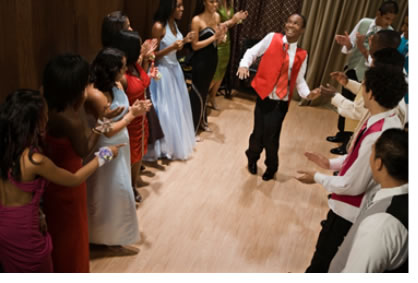Observational Learning
You have studied two types of learning in the previous lessons (classical conditioning and operant conditioning) that emphasize how direct experience, reinforcement, or punishment lead to learning.
In this lesson we will discuss a third type of learning which occurs indirectly through watching, modeling, or imitating other people, which in psychology is known as observational learning.
Observational learning, proposed by Albert Bandura has become perhaps the most influential theory of learning and development. While rooted in many of the basic concepts of traditional learning theory, Bandura believed that direct reinforcement could not account for all types of learning.
His theory added a social element, arguing that people can learn new information and behaviors by watching other people. Known as observational learning (or modeling), this type of learning can be used to explain a wide variety of behaviors.
 One buys a hat, they all buy a hat!
One buys a hat, they all buy a hat!
There is a subtle but important distinction between modeling and observational learning.
When you go to a concert for the first time, you may be hesitant on when to enter, where to sit, when to clap and so on. Therefore you observe others and do what they do, and the next time you go to a concert you know exactly what to do.
No learning has occurred. You are simply modeling what you see in others.

In observational learning a new behavior is learned. For example, you watch someone perform an unfamiliar dance step and then later you are able to do the dance step. You have learned a new behavior.
There is also an added element to the learning which is the reward, (an intrinsic reward) in that you feel good about yourself for learning a new dance step. Observational learning generally occurs in the absence of punishment.

Albert Bandura
The psychologist best known for his studies in observational learning is Albert Bandura, who did experiments showing that children who watched adults behaving aggressively (and were not punished) were more likely to behave aggressively themselves. His most famous experiment was the Bobo doll study.
Bandura let a group of kindergarteners watch a film of an adult violently attacking an inflatable plastic toy shaped like Bobo the Clown by hitting it, sitting on it, hammering it, and so forth.
He then let the children into a room with Bobo dolls. The children imitated the adult's behavior by attacking Bobo. Their behavior was a type of observational learning.
 Albert Bandura
Albert Bandura
Entertainment Violence
Bandura's research has sparked concern about the amount of violence and sex that children are exposed to through television, movies and now video games.
The debate is that this exposure could potentially have negative effects and possibly desensitize children to violence.
Because of his research and parental concerns, a rating system for video games, movies, and music has been implemented as a guide for appropriateness for children.

The results of other studies revealed that early childhood exposure to TV violence predicted aggressive behavior for both males and females in adulthood. Additionally, identification with same sex aggressive TV characters, as well as their perception of the realism of TV violence, also predicted adult aggression in both males and females.
Furthermore, while a positive relationship was found between early aggression and subsequent TV violence viewing, the effect was not significant.
These findings suggest that while aggressive children may choose to watch more violent TV programming, it is more plausible that early childhood exposure to TV violence stimulates increases in aggression later in adulthood.

In response to these studies, programs have been formed to make parents more aware of the possible long term effects of exposure to violent media.
One such program is the ACT Raising Safe Kids Program sponsored by the American Psychological Association and others.

This program seeks to prevent violence by providing young children with positive role models. Check out the American Psychological Association's website for more information on ACT.